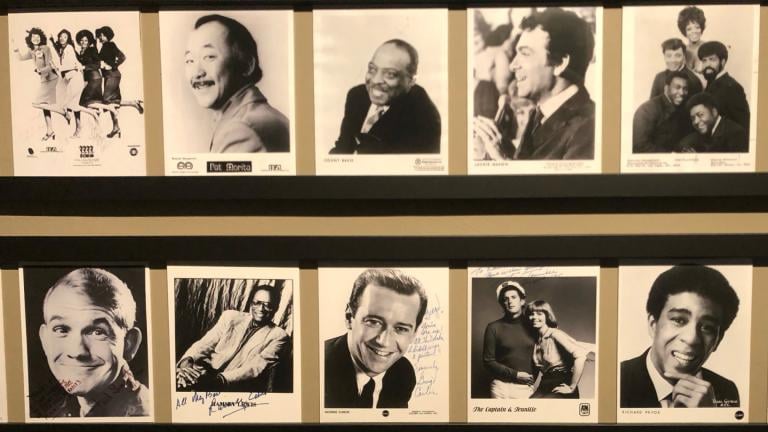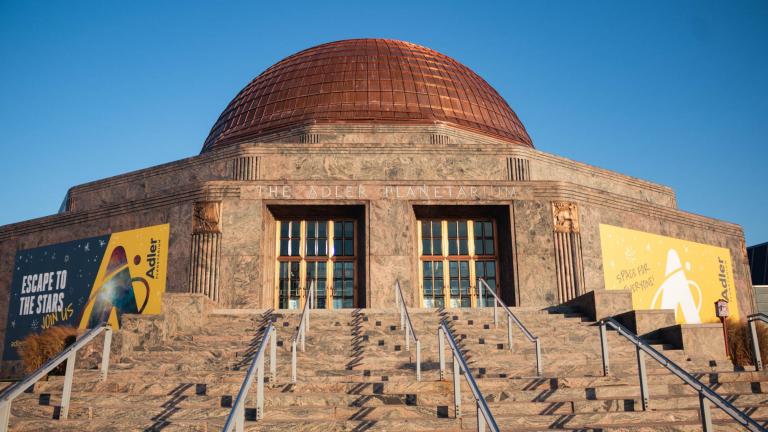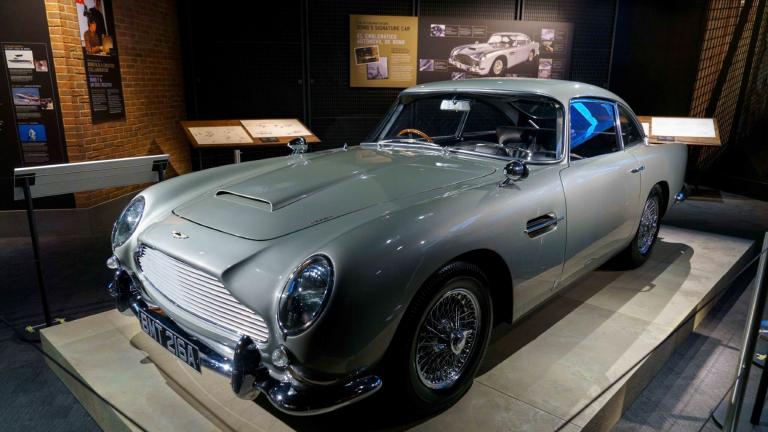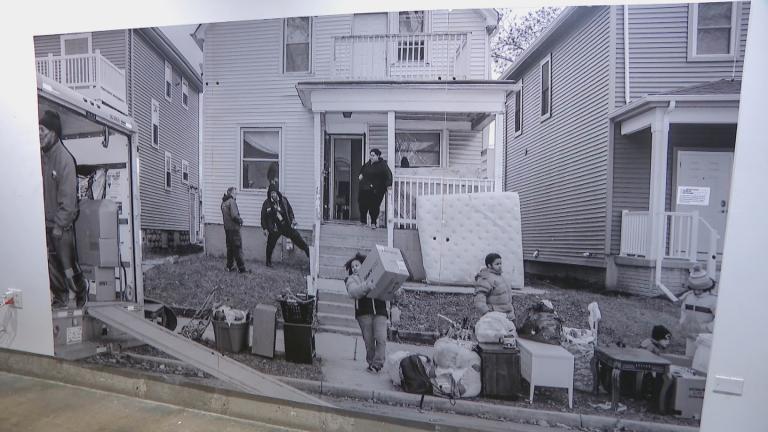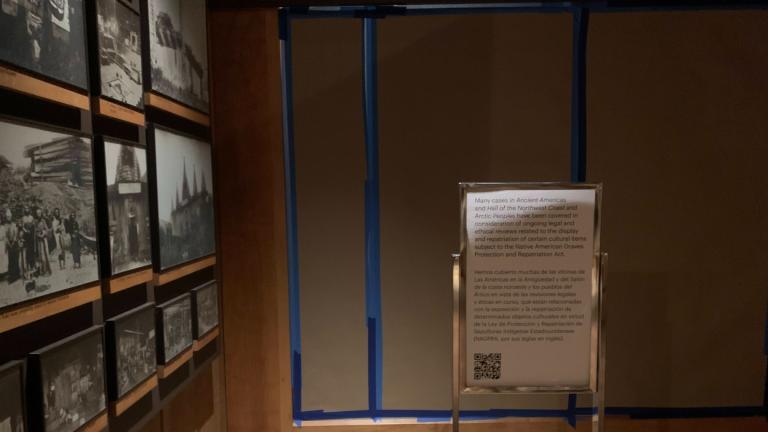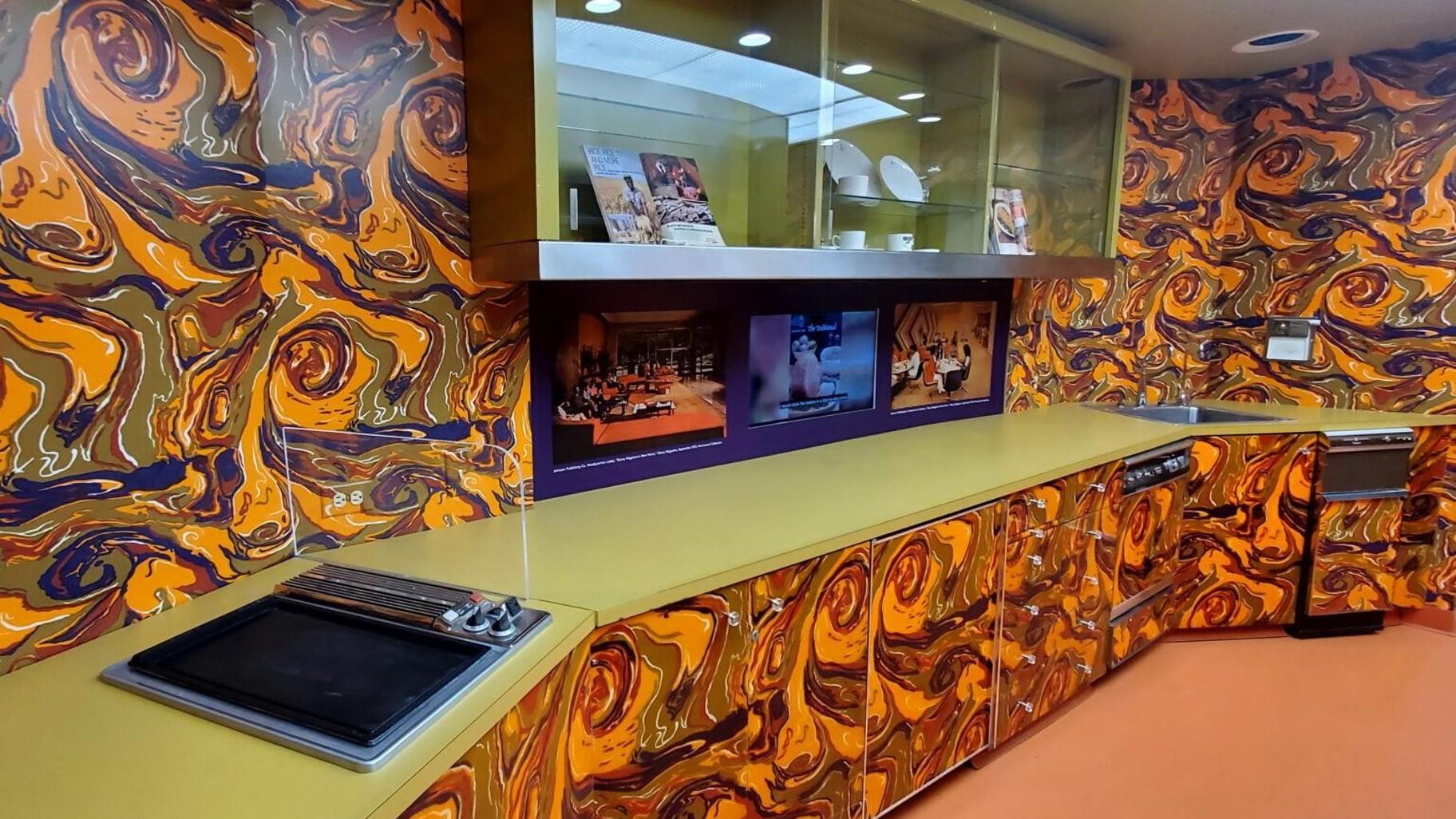 The Ebony test kitchen at the Museum of Food and Drink in New York City. (Courtesy of Landmarks Illinois)
The Ebony test kitchen at the Museum of Food and Drink in New York City. (Courtesy of Landmarks Illinois)
The iconic test kitchen used by the formerly Chicago-based Ebony magazine — which has long served as a symbol of Black culinary history and a celebration of Black cuisine — has a new home with the Smithsonian’s National Museum of African American History and Culture.
The museum, based in Washington, D.C., received the test kitchen as a donation from the nonprofit organization Landmarks Illinois, which acquired the test kitchen in 2018 to ensure its preservation.
The test kitchen, originally constructed in the early 1970s and housed at the former Johnson Publishing Company Building in the South Loop, was used by Ebony magazine editors to test recipes the magazine would feature in its publication.
“I first saw the kitchen when I went for the interview and I was like, ‘Wow,’ because the colors, it was purple and orange, and really vibrant,” said Charlotte Lyons, former food editor of Ebony magazine from 1985 to 2010. “I had never seen a kitchen that was decorated like that.”
Lyons wrote for the magazine’s long-standing food column “A Date with a Dish,” covering everything from elegant to down-home meals. Some of her favorite recipes she tested in the kitchen included cornmeal crescent rolls, cream cheese pound cake and tequila lime chicken wings.
The Museum of Food and Drink restored and updated the kitchen for its “African/American: Making the Nation’s Table” exhibition in New York City last year.
The test kitchen featured a sitting area, all-electric appliances, wine rack and display and storage cabinets. It also had what were considered at the time high-end modern amenities and appliances such as stovetop grills, a trash compactor and a refrigerator with an ice and water dispenser.
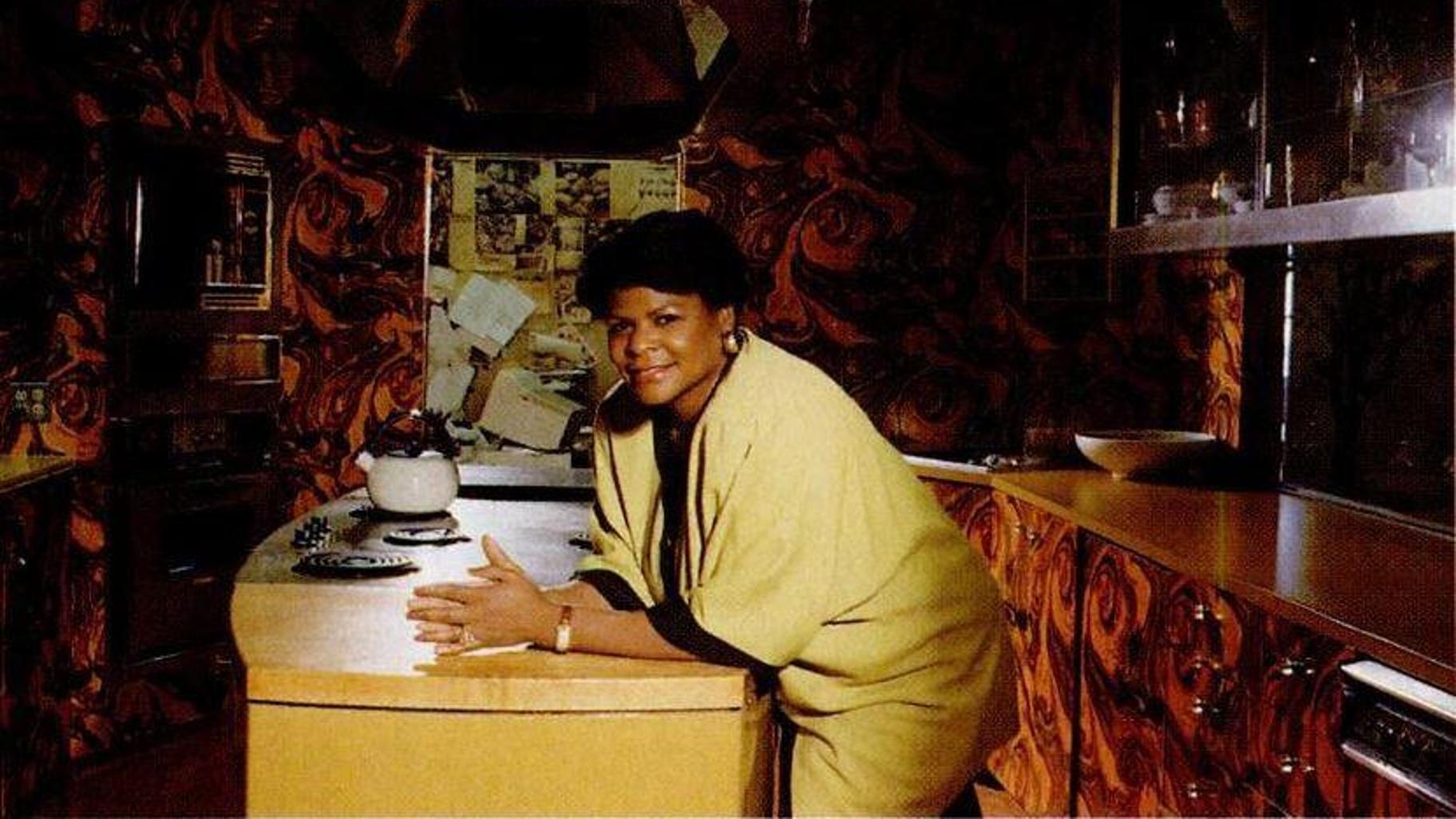 Photograph by Vandell Cobb. Johnson Publishing Company Archive. (Courtesy J. Paul Getty Trust and Smithsonian’s National Museum of African American History and Culture.)
Photograph by Vandell Cobb. Johnson Publishing Company Archive. (Courtesy J. Paul Getty Trust and Smithsonian’s National Museum of African American History and Culture.)
Lee Bey, architecture adjunct professor at Illinois Tech and architecture critic for the Chicago Sun-Times, said that the test kitchen’s acquisition by the museum is a great moment for preserving the architecture and history created by African Americans.
Bey first saw the test kitchen in 2013 in the Johnson Publishing Company Building, which was owned by Columbia College at the time. The building was designated as a city landmark in 2017 following grassroots efforts to save it from demolition.
“I’ve seen photographs, but there’s nothing like experiencing that space up close,” Bey said.
The Ebony test kitchen is part of the cumulative vision of “design, Black identity and Black branding” that Ebony founders John and Eunice Johnson — along with the kitchen’s designers, William Raiser and Arthur Elrod —had, Bey said.
Lyons said she wants the test kitchen to be remembered as a fun place. “In a way, it was sort of like a kitchen in a home where everybody would gather,” Lyons said.
The National Museum of African American History and Culture said the test kitchen will undergo conservation work. There are no immediate plans to display it inside the museum.
Learn more about the Ebony test kitchen and its history on the museum’s website.

